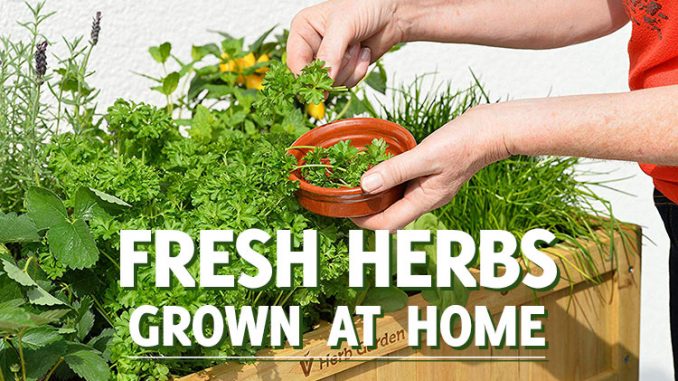
Growing herbs for use in the kitchen, medicine cabinet, or in-home cosmetics can be a pleasure. Many herbs can be used in all three of these categories, and a small herb garden can be very productive. Whether you want fresh basil for cooking or you want to make herbal soap for family and friends, here are four essential tips for a thriving herb garden.
Know When to Buy and Know When to Plant
While many annual herbs like basil can be started from seed, most perennial herbs should be purchased as plants. Perennial herbs are notoriously hard to sprout, and they can grow slowly for their first couple of seasons. Get your garden off to a good start by either purchasing plants or taking cuttings or divisions of established plants from friends who garden.
If you are buying plants, you should look for plants that have been organically grown. Fresh herbs tend to be resistant to pests and disease and do not need the assistance of chemicals in order to flourish.
Feed the Herbs That Will Feed You
Since the leaf is the most commonly used part of an herb, it is important to do encourage leaf growth. The two most important things you can do are provide a ready source of nitrogen and plenty of water.
You may think that nitrogen is a chemical and that I just said that herbs don’t need chemicals! That is true, but nitrogen is an essential part of the growth process for plants.
In most cases, you can provide nitrogen for your herbs by mulching them with grass clippings or by mixing a pile of grass clippings into the soil each spring. As the clippings decompose, they will release nitrogen into the soil, providing a ready supply for your herbs.
Water is the other half of the equation, and you should make sure that your watering is consistent. When you have watered your garden, poke your finger into the soil. If the dirt is not wet several inches below the surface, you need to keep watering.
Know When and How to Harvest Your Fresh Herbs
Herbs should be harvested in the morning, just after the dew has dried. Harvesting in the heat of the day will reduce the flavor and scent since the sun dries out the leaves slightly during the day.
Use a sharp pair of scissors or a knife and never take more than a third of the plant. If you need copious amounts of an herb (pesto for the family reunion, for instance), plan to harvest for several weeks before the event.
Unwashed herbs can be refrigerated in plastic bags, and most will keep for two to three weeks.
Regular trimming of your plants will encourage them to grow, so use the methods below to preserve your harvest until you need it.
Don’t Waste Any; Preserve What You Don’t Use
Many times your plants will produce more than you can use. Don’t worry, fresh homegrown herbs are some of the easiest things from your garden to store.
Drying
Drying is the easiest method of preserving herbs for future use. You can dry herbs almost anywhere. Wash leaves or stems that you have cut and spread them on trays. You can either put them in your oven on low heat for several hours or put the trays in a warm dark place for a few weeks.
Either way, you will want to stir the drying herbs occasionally to make sure they dry thoroughly. The drying process is complete when leaves and stems feel crisp to the touch and crumble easily. Herbs preserved this way will last up to one year.
Do not dry herbs in bunches. You will not get adequate air circulation in the middle of the bunch, and your herbs will mold.
Freezing
Herbs can also be frozen for future use. Again wash the herbs, but this time chop or cut them into the desired size. You can put them in small bags in the freezer or fill ice cube trays with herbs. Once the herbs have frozen, you can store them for several months before using them. Be sure that you freeze the herbs in usable amounts. There are few things as frustrating as trying to thaw a large block of frozen parsley!
Infused Oils and Vinegars
Finally, you can also preserve many herbs in oil or vinegar. Take several stems of freshly harvested leaves and stems and place them in a pan along with a cup of olive oil or white vinegar. Bring the liquid to a lukewarm temperature, pour it into dark-colored jars, and screw on the lids. Store the oil or vinegar for two to three months before using it. The resulting flavored oil or vinegar may be used in salad dressing, stir fry, or anywhere you want a little extra flavor.
Herbal oils and vinegar also make great gifts.
Conclusion
Whatever you do with your herb garden, have fun with it. Any recipe that calls for a dried herb will taste so much better with fresh herbs from your garden.

Be the first to comment